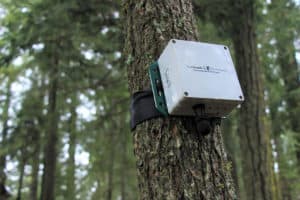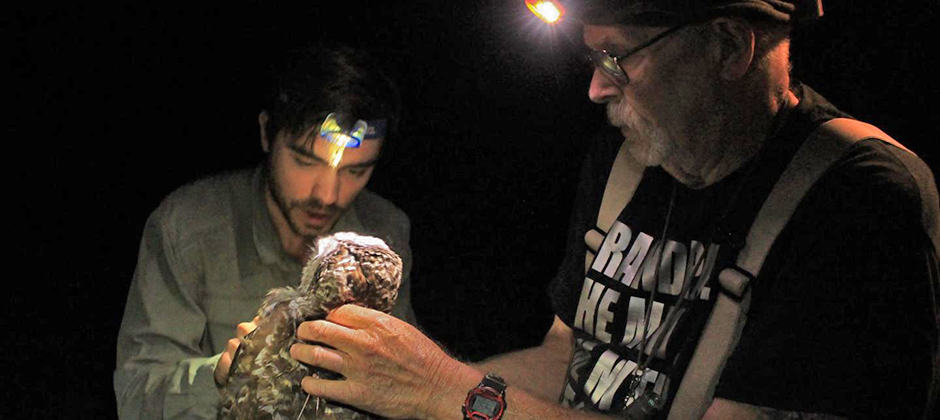Share this article
Researchers call for protections for California spotted owl
As invasive barred owls encroach on California spotted owl habitat in the Sierra Nevada, researchers say there’s a narrow window to deal with them before their populations explode. Their growing numbers could help push the California spotted owl toward extinction, researchers fear, much as they are causing declines in populations of northern spotted owls elsewhere.
It may be “now or never,” said Connor Wood, a PhD student at the University of Wisconsin-Madison and lead author on the study published in The Condor: Ornithological Applications.
Invasive species tend to display several generations of low population density and low growth before the population takes off, Wood said. While barred owl numbers are still low in the Sierra Nevada, Wood and his colleagues’ findings suggest that this is changing rapidly. “There’s a narrow window of opportunity to take meaningful action as conservationists,” he said.

Passive acoustic monitoring devices like this one allow researchers to track owls across a large area. ©Connor Wood
Wood and his team decided to look into barred owl incursion into the Sierra Nevada after seeing its impacts on another spotted owl subspecies, the northern spotted owl (Strix occidentalis caurina). As barred owls expanded their historic range into northern spotted owl territory, competing for food and resources, native owl numbers plummeted, Wood said.
He and his colleagues wondered if California spotted owls (S. o. occidentalis) might face the same fate. Sporadic reports suggested that barred owls (S. varia) began showing up around 1989 in Sierra Nevada forests occupied by the California subspecies of spotted owl, but researchers weren’t sure. “A lot of those detections were few and far between,” Wood said, “and they were also anecdotal.” He and his colleagues wanted to collect concrete evidence that barred owls were there and find out where they were congregating.
They set out to survey almost the entire northern Sierra Nevada for barred owls using bioacoustics. They put up passive recording units throughout the landscape and picked out owl hoots from about 200,000 hours of audio.
In 2017 the barred owl population was relatively low — about 8% of the landscape had barred owls, researchers found, but in just one year, their numbers more than doubled.
To make sure they weren’t counting the same bird multiple times, Wood and his colleagues GPS-tagged 10 barred owls to understand their behavior. They found the owls displayed stable territories that were about the size of their survey grid cells. “This gives us confidence that what we documented in the patterns of the acoustic survey reflect population growth,” he said.
Their growing numbers come as California spotted owl populations are falling. Long-term studies show the species is declining about 2% per year, even in the absence of any major barred owl populations. Reasons for their decline may be habitat-related, Wood said. “So the possibility of barred owls getting established in the Sierra Nevada — because they are already facing challenges — is yet another problem,” he said. “And this combination of threats really does have the potential to push them quickly toward extinction.”
Researchers urge taking action to protect the California spotted owl. Scientists could use the existing acoustic monitoring program to determine whether experimentally removing barred owls from the Sierra Nevada is an effective management option, Wood said.
Header Image: Researchers attach a GPS transmitter to a captured barred owl. ©Nick Kryshak








